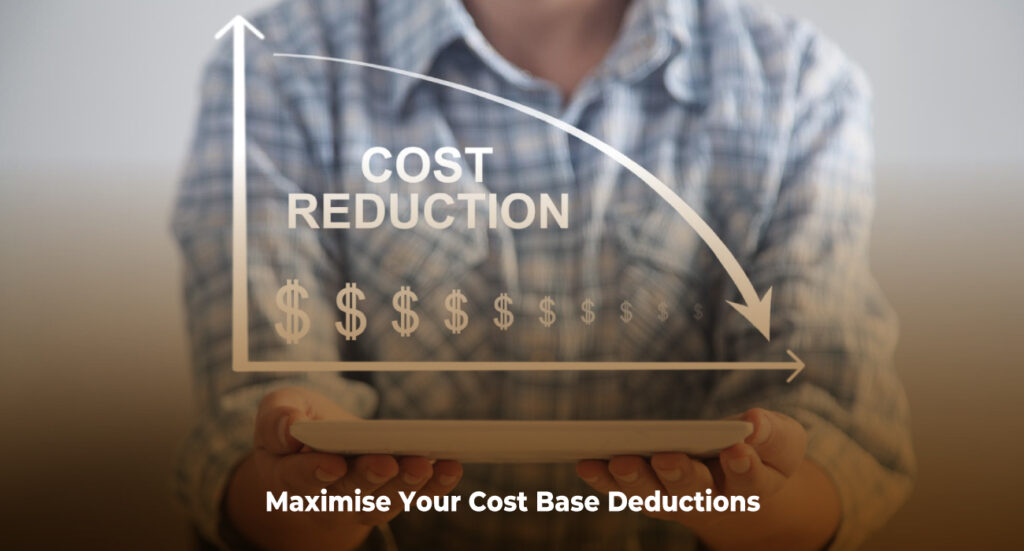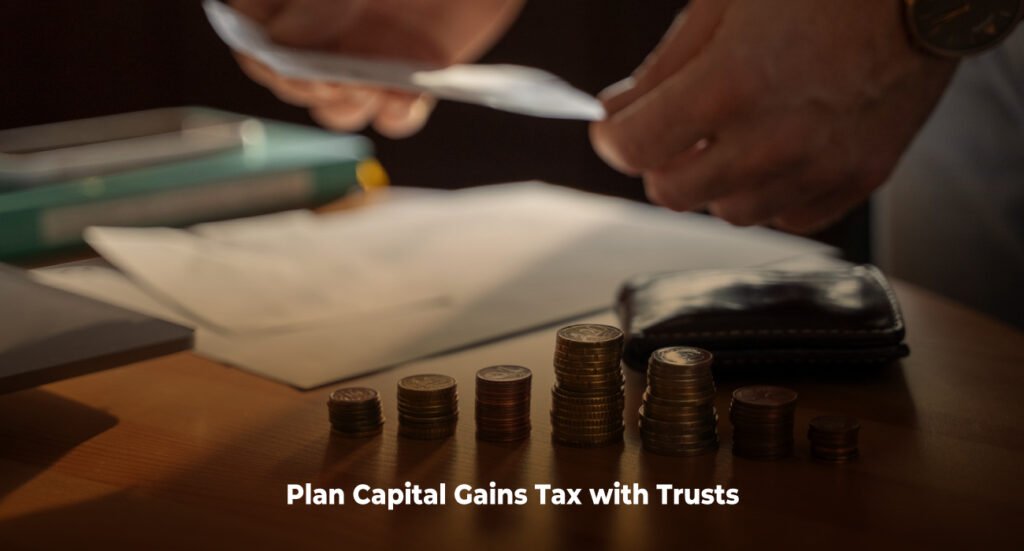How to Reduce or Eliminate Capital Gains Tax in 2025: A Complete Guide
Introduction
This is a topic that never goes out of style. Every investor wants to save tax, especially when it comes to selling a large asset such as a residential investment property or a commercial property. The bigger the profit, the bigger the Capital Gains Tax (CGT) bill—and that can run into hundreds of thousands of dollars.
Naturally, the most common question investors ask is: How do I minimise this tax? More importantly, can I reduce it to NIL?
In this article, we’ll explore practical and legal strategies available in 2025 to reduce or even eliminate your CGT liability. From the 50% discount rule to smart use of superannuation, trust structures, and small business concessions, we’ll break down how investors can keep more of their hard-earned profits. If you’re planning to sell in 2025, this guide will help you understand not just the opportunities—but also the tax traps to avoid.

What Is a Capital Gain (CGT)
A capital gain happens when you sell an asset, such as property, shares, or cryptocurrency, for more than what it cost you. The difference between the selling price (capital proceeds) and what you originally paid, including associated costs (the cost base), is your gain. Capital Gains Tax (CGT) is not a separate tax—it forms part of your income tax. If your result is positive, you have a capital gain that must be included in your annual tax return. If the result is negative, it becomes a capital loss, which can be used to offset other capital gains in the same or future years.
Take Advantage of the 50% CGT Discount
One of the most significant benefits available to Australian investors is the 50% CGT discount. If you hold an asset—such as property or shares—for at least 12 months before selling, you may be eligible to reduce your capital gain by half. For example, a $100,000 gain would be discounted to $50,000, meaning you only pay tax on the reduced amount. This simple rule can dramatically cut your tax bill, making timing a critical factor when planning a sale in 2025.
However, foreign residents are generally not entitled to the 50% discount on gains accrued after 8 May 2012. If you are planning to move overseas and become a foreign resident, it may be worth considering whether to sell the asset while you are still an Australian tax resident to ensure you qualify. Professional advice is crucial here, as residency status can significantly affect your CGT outcome.

Use the Main Residence Exemption
For many Australians, the main residence exemption is the most powerful way to eliminate Capital Gains Tax. If the property you’re selling has been your home for the entire period of ownership, the gain is generally completely tax-free. Even if you rented it out for part of the time, you may still qualify for a partial exemption, reducing the taxable gain.
The ATO also allows the six-year absence rule—meaning if you move out and rent your property, you can still treat it as your main residence for up to six years without losing the exemption. This rule often benefits investors who upgrade to a new home but keep their old property as an investment.
Use Income Losses or Capital Losses to Offset CGT
If you have capital losses or carried-forward income losses, these can be powerful tools to reduce your capital gains tax in 2025. The tax rules require you to apply capital losses first—whether they arise in the same financial year or are brought forward from earlier years—before calculating your net capital gain. This can dramatically reduce, or even eliminate, your liability. For example, if you realise a $200,000 gain on selling an investment property but carry forward $80,000 in share losses, your taxable gain immediately reduces to $120,000.
Beyond capital losses, income losses from other sources, such as negatively geared rental properties or carried-forward business losses, can also reduce your overall taxable income. While they don’t offset the capital gain directly, they lower the total tax payable, making the CGT impact lighter. Timing matters—crystallising underperforming investments before a profitable sale ensures you can use those losses in the same year. With careful planning, existing losses can be your first line of defence in minimising CGT in 2025.

Maximise Your Cost Base Deductions
Another effective way to reduce your capital gains tax in 2025 is to ensure you capture every allowable element of your cost base. Many investors focus only on the purchase price and forget the additional costs that can significantly increase the cost base, thereby reducing the taxable gain when the asset is sold.
The cost base includes not just what you paid for the property or investment, but also a wide range of associated expenses. These can include stamp duty, legal fees, buyer’s agent fees, title search fees, and conveyancing costs. In addition, improvements and renovations that add value to the asset—such as extensions, structural upgrades, or even capital repairs—can also be added to the cost base. Importantly, holding costs such as interest, rates, and insurance may qualify in certain circumstances if they haven’t already been claimed as deductions.
By keeping thorough records and revisiting your purchase and improvement history, you can often add tens of thousands of dollars to your cost base. This directly reduces your capital gain calculation, making it one of the most reliable ways to keep your CGT bill lower in 2025.

Make Catch-Up Super Contributions
Superannuation is one of the most tax-effective vehicles available to Australians, and in 2025 the rules around catch-up contributions provide an excellent opportunity to reduce your CGT bill. Each year, individuals can make concessional (before-tax) contributions to super, capped at $30,000 for the 2025 financial year. However, if you haven’t used your full cap in previous years (going back to 2019–20), you may be able to “catch up” by contributing the unused amounts—provided your total super balance is under $500,000.
Why does this matter for capital gains? Because concessional contributions are tax deductible. By directing some or all of the proceeds from a sale into super, you can claim a larger deduction, reducing your taxable income in the same year. For example, an investor who makes a $40,000 catch-up contribution could potentially save more than $15,000 in tax, depending on their marginal rate.
For investors planning a property or asset sale in 2025, reviewing unused contribution caps is essential. This strategy not only lowers your immediate tax liability but also boosts your retirement savings at the same time.

Plan Capital Gains Tax with Trusts
A trust structure can be one of the smartest tools for managing Capital Gains Tax in 2025. When an asset is owned by a trust, the capital gain is not taxed inside the trust itself. Instead, the gain can be distributed to beneficiaries, often allowing the income to be spread across family members on lower tax rates. This can dramatically reduce the overall tax bill compared to holding the asset in a single individual’s name.
Trusts can also provide flexibility. For example, a discretionary trust may direct the gain to beneficiaries with available income losses, or to someone in a lower tax bracket, to minimise the tax impact. In some cases, gains can even be streamed to a bucket company, locking in a lower corporate tax rate.
Eliminate Your Property Capital Gain with Your SMSF
For investors with a self-managed superannuation fund (SMSF), there are unique opportunities to reduce, or even eliminate, Capital Gains Tax in 2025. Assets sold within an SMSF are taxed at just 15% in accumulation phase, and if the fund has held the asset for more than 12 months, the CGT rate drops to 10%. But the real advantage comes once the SMSF moves into pension phase—where investment earnings and capital gains can be entirely tax-free, up to the transfer balance cap.
This means that selling an investment property through your SMSF while in pension phase could result in zero CGT liability. For example, a $300,000 gain on a residential or commercial property could be completely exempt from tax if the fund is in retirement phase.
Of course, strict compliance rules apply, especially with limited recourse borrowing arrangements (LRBAs) and contribution caps. Timing also matters—transitioning to pension phase before a sale can make a huge difference. With careful planning, an SMSF can be the most powerful tool for legally eliminating CGT on property sales.
What’s Next
Minimising Capital Gains Tax in 2025 or in future years isn’t about cutting corners—it’s about planning ahead and using every strategy the tax law allows. Whether it’s applying capital or income losses, maximising your cost base, using catch-up super contributions, taking advantage of the 50% discount, leveraging the main residence exemption, structuring through trusts, or selling within an SMSF, there are multiple ways to keep more of your profit in your pocket.
The right approach will always depend on your personal circumstances—your residency, income level, ownership structure, and long-term goals all play a role. That’s where expert advice makes the difference between paying more tax than you should and achieving the best possible outcome.
At Investax, we specialise in guiding property investors, business owners, and SMSF trustees through complex tax matters like CGT. If you’re planning to sell an asset in 2025 or in the future, now is the time to act. Contact our team today to map out a tailored CGT strategy that helps you reduce your tax bill—and maybe even eliminate it entirely.
General Advice Warning
The material on this page and on this website has been prepared for general information purposes only and not as specific advice to any particular person. Any advice contained on this page and on this website is General Advice and does not take into account any person’s particular investment objectives, financial situation and particular needs.
Before making an investment decision based on this advice you should consider, with or without the assistance of a securities adviser, whether it is appropriate to your particular investment needs, objectives and financial circumstances. In addition, the examples provided on this page and on this website are for illustrative purposes only.
Although every effort has been made to verify the accuracy of the information contained on this page and on our website, Investax Group, its officers, representatives, employees and agents disclaim all liability [except for any liability which by law cannot be excluded), for any error, inaccuracy in, or omission from the information contained in this website or any loss or damage suffered by any person directly or indirectly through relying on this information.





